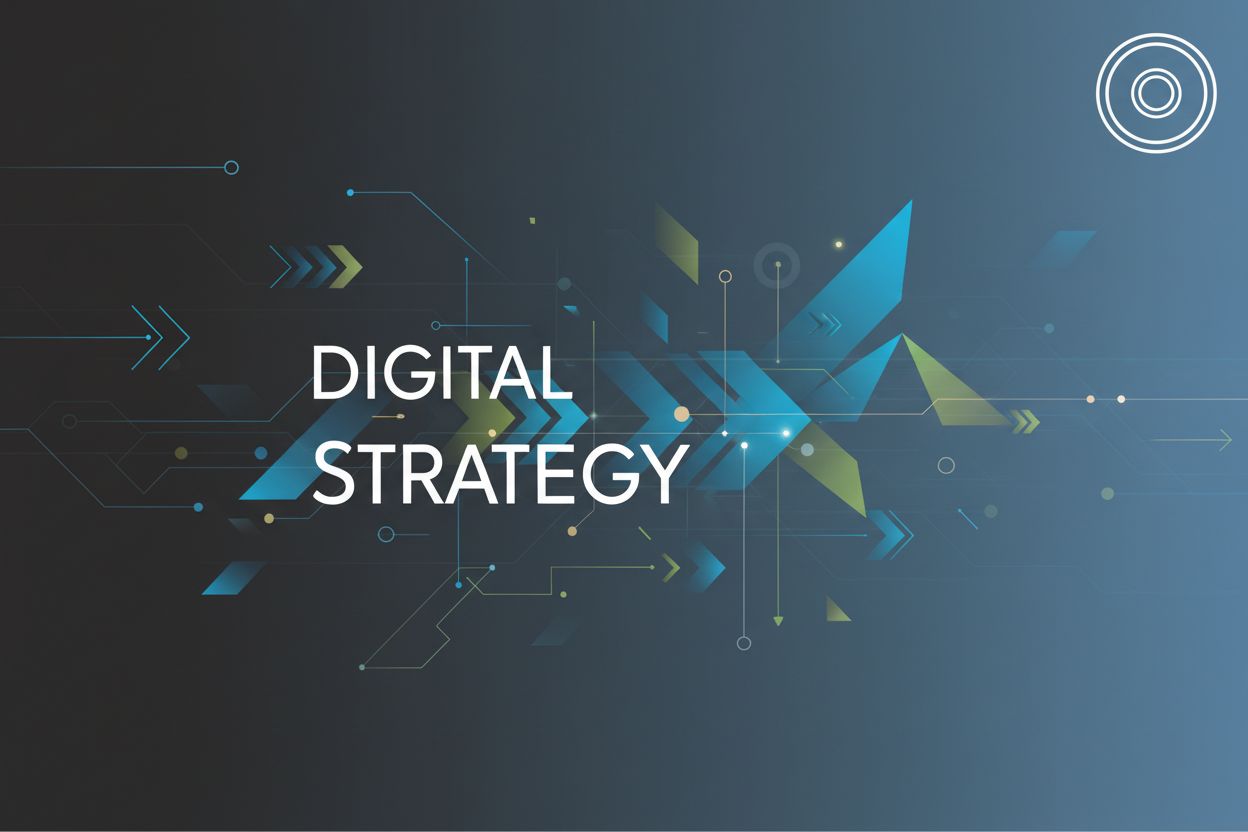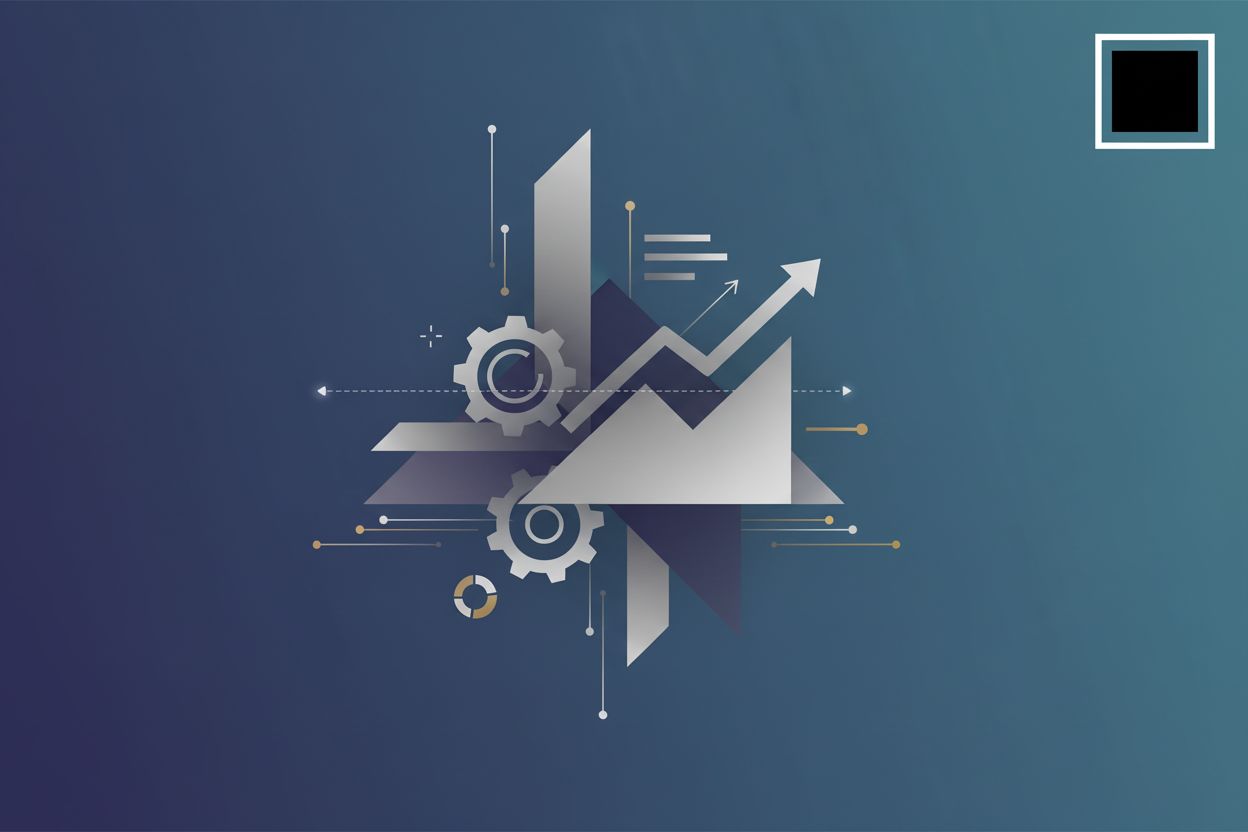IT Strategic Framework
TL;DR
Understanding the
Alright, let's dive into this IT strategic framework thing. I mean, let's be honest, the name itself sounds kinda dry, right? But trust me, it's actually pretty crucial – especially if you're a brand manager or CMO trying to wrangle your digital presence.
Basically, an IT strategic framework is like a roadmap that aligns your tech initiatives with your bigger business goals. Without it, you're basically driving blindfolded, hoping your shiny new app somehow boosts brand awareness. ClearPoint Strategy says it's "a structure designed to help organizations develop an action plan to achieve their goals." Sounds simple, but it's powerful.
Think of it this way: you wouldn't launch a huge marketing campaign without a strategy, right? Same goes for your IT investments. This framework makes sure you're not just throwing money at the latest tech trends, but actually using IT to drive growth, improve customer experience, and, you know, make your brand a total rockstar.
So, what goes into this magical framework? Well, here's a few key components to keep in mind:
- Mission, Vision, Values: What does your company stand for? How does tech play into that? For example, a healthcare provider's tech investments should reflect their mission of providing accessible, high-quality care.
- Strategic Goals: What are you trying to achieve? More leads? Better customer retention? Your IT strategy needs to directly support those goals.
- Current State Analysis: What tech do you already have? What's working? What's a dumpster fire? Gotta be honest with yourself here.
- Future Needs: What tech will you need to stay competitive? Keep an eye on market trends and emerging technologies, but don't get distracted by every shiny new toy.
Okay, so you're a brand manager or CMO, not a cio. Why should you give a hoot about all this IT stuff? Well, here's the thing: your brand is basically your promise to your customers. And these days, that promise is delivered through digital channels.
Your website, your app, your social media presence – all of that relies on IT. If your IT is a mess, your brand suffers. It's as simple as that. Plus, a solid it strategy directly impacts your marketing roi. Are you tracking customer data effectively? Are you personalizing experiences? These are all IT-driven initiatives that can make or break your marketing efforts.
Imagine a retail company using data analytics to personalize product recommendations on its website. Or a financial institution using ai to detect fraudulent transactions in real time, building customer trust. These are just a few examples of how IT can directly impact brand perception and customer loyalty.
Alright, so hopefully, you're now convinced that IT strategic frameworks aren't just boring corporate jargon – they're actually vital for building a successful brand in the digital age.
Now that we've got the basics down, let's move onto the next section to take a deeper dive.
Popular Strategic Frameworks and Models
Okay, so now that we've established why it's important to have an it strategic framework, let's look at some frameworks that are out there. Honestly, there's a ton – it can be overwhelming. But don't worry, we'll just hit the highlights.
Swot stands for Strengths, Weaknesses, Opportunities, and Threats. It's like, the OG of strategic frameworks. Basically, it's a structured way to figure out what you're good at, what you suck at, what's coming your way that could help, and what's coming that could hurt.
- Strengths: What internal resources or capabilities give your it department a competitive edge? Maybe you have a team of ai wizards or a rock-solid cyber security infrastructure.
- Weaknesses: Where are you falling short? Is your legacy system held together with duct tape? Are you struggling to attract top tech talent?
- Opportunities: What external trends could you leverage? Maybe there's a new api that could revolutionize your data integration, or a government grant program for digital transformation.
- Threats: What external factors could screw you over? Think increasing cyber security threats, a shortage of skilled developers, or a disruptive new technology that makes your current systems obsolete.
Think of a retail company doing a swot analysis before investing in a new e-commerce platform. Their strengths might be a strong brand and loyal customer base. Weaknesses? An outdated website and slow shipping times. Opportunities could be the growing trend of online shopping and the ability to personalize customer experiences. Threats might include competition from amazon and rising shipping costs.
The Balanced Scorecard (bsc) is a performance management framework that looks beyond just financial metrics. it considers four key perspectives:
- Financial: How does it contribute to the bottom line? (e.g., increased revenue, reduced costs)
- Customer: How does it improve customer satisfaction and loyalty? (e.g., faster website loading times, personalized recommendations)
- Internal Processes: How does it optimize internal operations? (e.g., streamlined workflows, reduced errors)
- Learning & Growth: How does it foster innovation and employee development? (e.g., training programs, investment in new technologies)
Using bsc helps ensures your it investments are aligned with your overall business strategy, as mentioned earlier. For example, a healthcare organization might use bsc to track the impact of its new electronic health record (ehr) system on patient outcomes, operational efficiency, and employee satisfaction.
Pestle stands for Political, Economic, Social, Technological, Legal, and Environmental. It helps you understand the external factors that could impact your it decisions.
- Political: What government regulations or policies could affect your tech strategy?
- Economic: What economic trends could impact your it investments?
- Social: What social or cultural factors should you consider?
- Technological: What emerging technologies could disrupt your industry?
- Legal: What laws or regulations do you need to comply with?
- Environmental: Are there any environmental factors that could affect your it operations?
Porter's Five Forces analyzes the competitive landscape:
- Competitive Rivalry: How intense is the competition in your industry?
- Threat of New Entrants: How easy is it for new competitors to enter the market?
- Bargaining Power of Suppliers: How much power do your suppliers have?
- Bargaining Power of Customers: How much power do your customers have?
- Threat of Substitute Products: How easily can customers switch to alternative solutions?
Alright, so that’s a quick overview of some popular strategic frameworks. Each one offers a different lens through which to view your it strategy. Next up, we'll dive into how to choose the right framework for your specific needs.
Aligning IT with Business Goals
Okay, so you're trying to get your it strategy on the same page as what the business is actually trying to do. It's like trying to conduct an orchestra where half the musicians are playing a different song, isn't it? Turns out, a lot of companies struggle with this.
You ever wonder how some brands just know what you want before you even realize it yourself? It's not magic; it's usually it working hand-in-hand with marketing.
- One of the biggest wins is personalized marketing experiences. Think about it: the more your it systems can track customer behavior and preferences, the better you can tailor your messaging. This isn't just about throwing someone's name into an email; it's about serving up content and offers that genuinely resonate.
- Then there's data analytics. It's not just about collecting data; it's about turning it into insights. Imagine segmenting your audience based on their purchase history, website activity, and social media engagement. With the right it setup, you can target each segment with laser precision, boosting engagement and conversions.
- And let's not forget automation. Marketing campaigns can be a beast to manage, but it can automate a ton of the grunt work. Think automated email sequences, social media scheduling, and even chatbot interactions. This frees up your marketing team to focus on the creative stuff.
- Of course, you gotta be careful about security and privacy. Customers are increasingly savvy about their data, and they're not afraid to bolt if they feel like you're mishandling it. Your it infrastructure needs to be rock-solid to protect customer data and comply with regulations.
Marketing gets them in the door, but sales and crm keep them coming back. How does it play into that?
- crm systems are the backbone of any modern sales operation. It's where you store all your customer data, track interactions, and manage the sales pipeline. A well-integrated it system ensures that your sales team has all the info they need at their fingertips.
- Plus, it helps with sales forecasting and performance tracking. Are you meeting your targets? Where are the bottlenecks in the sales process? It can provide the data you need to make informed decisions and optimize your sales strategy.
- And let's not forget customer service. Chatbots, knowledge bases, and ticketing systems can all improve the customer experience and boost satisfaction. It ensures that customer inquiries are handled quickly and efficiently.
It is not just a support function; it's a driver of innovation.
- For starters, it can help you gather customer feedback and market insights. What are people saying about your products? What features are they clamoring for? It can tap into social media, customer reviews, and surveys to provide valuable insights that inform product development.
- It also enables agile product development. With the right tools and infrastructure, you can quickly iterate on your products, test new features, and get feedback from users. This allows you to adapt to changing market demands and stay ahead of the competition.
- And of course, it's essential for leveraging emerging technologies. ai, iot, and blockchain are all transforming the product development landscape. It can help you experiment with these technologies and build innovative new products that meet the needs of tomorrow's customers.
Think of a medical device company using iot sensors to collect real-time data on patients' vital signs. Or a food manufacturer using blockchain to track the origin and safety of its ingredients. These are just a few examples of how IT can be used to drive product innovation and improve customer outcomes.
So, you see, aligning it with business goals isn't just about making things more efficient. It's about unlocking new opportunities for growth, innovation, and customer engagement. Next up, we'll look at how to choose the right framework for your specific needs.
Implementation and Execution
Okay, so you've got this IT strategy framework, and you're trying to make it real. It’s not just about pretty slides and buzzwords, but about actually getting stuff done. Easier said than done, right?
Think of your IT roadmap as the detailed itinerary for your tech journey. It's not enough to say "we're going to the cloud;" you need to map out how you're getting there.
- First, break down your strategic goals into actionable projects.
- Then, prioritize those projects based on impact and alignment with the overall strategy.
- Finally, set realistic timelines, milestones, and allocate resources.
Like, imagine a retail chain aiming to improve customer experience. Their roadmap might include projects like upgrading their e-commerce platform, implementing a crm system, or launching a mobile app, each with its own timeline and budget.
Oh, change management. That's when things get really interesting. Tech implementations can be disruptive, so you gotta get everyone on board.
- Clearly communicate the benefits of the new it initiatives.
- Provide adequate training and support.
- Address concerns and resistance head-on.
It's not enough to just tell people about the new system; you need to show them how it'll make their lives easier. For example, a healthcare provider implementing a new ehr system might offer training sessions, create user guides, and assign super-users to help colleagues navigate the new system.
How do you know if your it strategy is actually working? You gotta track the right kpis – key performance indicators.
- Identify kpis before you start.
- Use data analytics to track progress.
- Conduct regular reviews and audits.
For example, a financial institution implementing a new cyber security system might track metrics like the number of attempted breaches, the time to detect and respond to incidents, and employee training completion rates.
So, you've built your roadmap, managed the change, and tracked your progress. Now, let’s talk about choosing the right framework for your needs.
Case Studies and Examples
Alright, so we've been laying down the groundwork—mission statements, goal alignments, all that jazz. But let's be real, does this IT strategic framework ACTUALLY work in the real world? I mean, put up or shut up, right?
Let's look at a few examples of how this it stuff can actually make a difference.
Boosting Customer Experience: Picture a retail company drowning in customer data but not knowing what to do with it. By implementing a solid IT strategic framework, they could, for example, use data analytics to personalize product recommendations, improve website navigation, and even predict future buying behavior.
Improving Patient Outcomes: Imagine a healthcare organization struggling with fragmented patient data across different departments. A well-designed IT strategic plan could help them implement a centralized electronic health record (ehr) system, enabling better care coordination and ultimately improving patient outcomes. The 2020-2025 Federal Health IT Strategic Plan emphasizes the importance of EHRs, but the key is making them work together, not just existing in silos.
Optimizing Operations: Think of a manufacturing firm dealing with constant equipment downtime. They could leverage iot and ai to implement predictive maintenance, reducing downtime and boosting operational efficiency.
Now, it's not all sunshine and rainbows. A poorly implemented it strategy can be a total disaster. Think of data breaches, system outages, and frustrated employees. That's why it's so important to get it right!
At GetDigitize, we're not just another agency, we're your partners in crafting a brand identity that resonates and strategies that deliver results.
From brand positioning to UI/UX design, social media campaigns to product design, we blend creativity with technical expertise to ensure your brand not only stands out but also stands the test of time.
Ready to transform your digital presence? Contact GetDigitize today and let's build something remarkable together!
So, there you have it. IT strategic frameworks aren't just theoretical concepts – they can have a real impact on your business. The key is to choose the right framework, align it with your business goals, and execute it effectively.
Next up: Let's talk about choosing the right framework for your specific needs.





